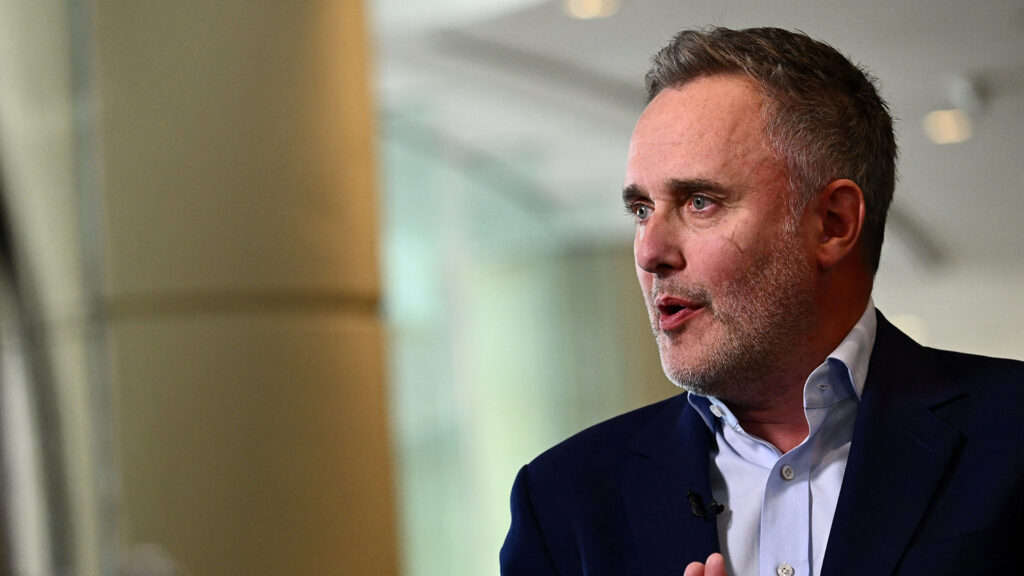
Newsletter Subscribe
Enter your email address below and subscribe to our newsletter

Enter your email address below and subscribe to our newsletter

Robin Vince of BNY Mellon explains why CEOs must be global translators amid growing trade tensions and policy confusion.
In a candid conversation at the 2025 Milken Global Conference, BNY Mellon CEO Robin Vince gave a sweeping overview of what’s on the minds of his global clients in a world shaped by shifting trade policy, market volatility, and geopolitical realignment.
With over $2 trillion in assets under management and $53 trillion in assets under custody, Vince sits at the intersection of global capital flows—and he’s sounding the alarm on a growing challenge for U.S. executives: the need to become “explainers-in-chief.”
At a time when signals are getting lost in the noise of policy debates, tariffs, and de-risking efforts, U.S. business leaders are being forced to not only lead but also interpret Washington’s moves to the rest of the world. Vince’s message is clear: American CEOs must double as diplomats.
Vince’s recent travel to Europe, India, and the Middle East has provided him with a mosaic of international perspectives. In India, the mood is largely optimistic—many see a reordering of trade flows as a unique opportunity.
In contrast, European clients are more skeptical, questioning whether the U.S. remains a reliable partner. The Middle East, meanwhile, appears to be watching with strategic detachment, focused on preserving long-term relationships.
“In Europe, it’s not just confusion—it’s concern. Clients are actively thinking about de-risking.” – Robin Vince
This geographical contrast underscores how global clients are recalibrating their outlooks based on policy and perceived consistency and reliability.
Much of Vince’s commentary centered around the “signal-to-noise” problem in trade and economic policy. As he puts it, global stakeholders can’t easily distinguish between U.S. tactical maneuvers and actual strategic policy shifts—whether it’s tariffs, deregulation, or tax reform.
This is creating anxiety for investors and institutions, especially in economies that are deeply integrated with U.S. markets. As a result, CEOs are increasingly being tasked with translating American policy for the global stage—a role that’s becoming essential amid uncertainty.
Vince also addressed growing concerns about the liquidity and depth of the U.S. Treasury market. While the market continues to function, he noted that the depth at the top of the order book fell by 80% during a recent period of volatility. Despite this, BNY Mellon processed $20 trillion in Treasury settlements in a single day—a testament to infrastructure resilience.
Still, Vince pointed to the need for regulatory reform, particularly changes to the Supplementary Leverage Ratio (SLR), which he argues has pushed banks out of their traditional market-making roles. The U.S. Treasury Department, he says, is right to explore SLR flexibility to ensure Treasury market liquidity under stress.
“We need intermediaries back in the game. SLR reform is part of that.” – Robin Vince
While there’s growing chatter globally about de-risking from U.S. markets, Vince was quick to note that it’s not so simple. The U.S. remains the deepest, most liquid capital market in the world. Add to that rule of law, dollar supremacy, and strong financial infrastructure, and it becomes clear why global institutions remain anchored in the American system.
“It’s easier said than done to pull away from the U.S. Treasury market.”
Even as global markets flirt with diversification, Vince believes that the gravitational pull of U.S. assets remains too strong to abandon.
The elephant in the room is the U.S. fiscal deficit, now approaching 7% of GDP. Vince stresses that this trajectory is unsustainable. The solution? Either economic growth or meaningful tax reform.
He emphasized that growth is the linchpin—not only does it improve tax revenues without raising rates, but it also increases global confidence in the U.S. economy.
Vince’s remarks echo a broader debate occurring in boardrooms and policy circles alike. As the 2025 trade environment heats up—driven by a Trump-influenced deregulatory, tariff-based agenda—CEOs are stepping up as unofficial diplomats. Financial stability, global partnerships, and institutional trust now rest on more than just policy—they hinge on how well leaders can explain, reassure, and execute.
Further context:
In a world where geopolitical tension and domestic uncertainty intersect, Robin Vince’s remarks at Milken 2025 offer a blueprint for leadership. In his view, being a great CEO today means being more than an operator—it means being an interpreter, a translator, and above all, an explainer-in-chief to the world.